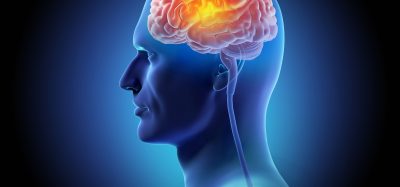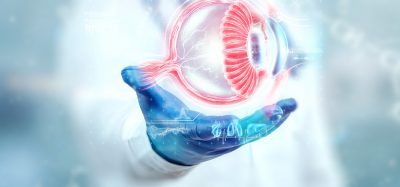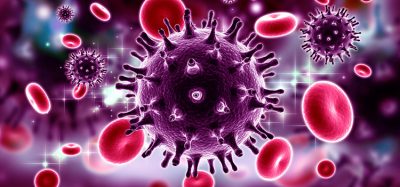From siloed data to breakthroughs: multimodal AI in drug discovery
Posted: 11 June 2025 | Alessio Zoccoli, Carlos N Velez, Remco Jan Geukes Foppen, Vincenzo Gioia | No comments yet
Drug development has long been hindered by fragmented data and complex processes, but a new wave of AI is reshaping the landscape. By integrating genomic, clinical and molecular data, multimodal models are revealing hidden patterns and accelerating more precise advancements in medicine.


Drug development is plagued by complex challenges, but multimodal AI is unlocking new opportunities. By integrating diverse data sources – from genomics to clinical insights – this approach is accelerating drug discovery, improving patient stratification and boosting success rates. Read on to explore how multimodal AI is reshaping the future of medicine.
Drug development faces significant challenges: long timelines, high costs, complex processes and low probabilities of success (PoS), exacerbated by the shift towards more complex molecules, biologics and cell and gene therapies, hindering patient access to vital treatments. The increasing complexity of advanced therapies has reduced approval rates, but AI is opening new opportunities.
While AI has been utilised in drug discovery for some time, its impact has been limited by siloed datasets. However, the field is evolving towards a more integrated approach, combining large-scale genomic datasets into multimodal language models (MLMs). This shift is driven by open access policies to biomedical data and the advent of next-generation sequencing (NGS). NGS has revolutionised genomic analysis, enabling the identification of disease-related genetic variants. Clinical genomics, powered by NGS, enables more precise target validation, improved patient stratification and optimised trial design, ultimately aiming to increase PoS. By integrating diverse data sources and leveraging AI, the industry hopes to overcome the challenges of complex drug development and accelerate the delivery of effective treatments to patients.
Biomarkers aren’t just supporting drug discovery – they’re driving it
FREE market report
From smarter trials to faster insights, this report unpacks the science, strategy and real-world impact behind the next generation of precision therapies.
What you’ll unlock:
- How biomarkers are guiding dose selection and early efficacy decisions in complex trials
- Why multi-omics, liquid biopsy and digital tools are redefining the discovery process
- What makes lab data regulatory-ready and why alignment matters from day one
Explore how biomarkers are shaping early drug development
Access the full report – it’s free!
Multimodal language models
Generative AI models (GenAI) in the pharmaceutical field have reached the highest level of attention with the Nobel Prizes to Demis Hassabis and John Jumper for AlphaFold, which can predict protein structures. These models aim to identify compounds with the optimal balance of properties for safety and efficacy in achieving the therapeutic objective. Leveraging patient genomic data to train and refine both generative and predictive models enhances their ability to identify molecules that are not only effective but also safe and suitable for specific patient populations. This approach prioritises patient selection by designing drugs with a higher PoS. Ultimately, the success of drug development hinges significantly on identifying the right patient populations for specific therapies.
Many companies have data in silos, and they go through data in a very linear fashion, one modality at a time.
Many companies have data in silos, and they go through data in a very linear fashion, one modality at a time. Traditional drug discovery data architecture is manual, messy, proprietary and inflexible. Unimodality does not allow for mixing data: cell data, images, molecular data, clinical data records, small molecule descriptors, ADME Tox data, transcriptomic data, text-based drug and disease representations, clinical trial protocols, publications and patent data, etc. If it’s not mixable, the data value chain (from R&D phase to production phase) is neither interpretable or reproducible. Multimodality however can detect and connect trends (and in future generate content) across different modalities and therefore allows for better interpretability, which builds trust between regulators, researchers and industry stakeholders. A known obstacle of biomedical data, with its inherent heterogeneity and inconsistencies, is that it presents significant challenges for creating a unified, high-quality knowledge base to fuel large language models (LLMs).
Multimodal language models are advanced language models that can handle multiple types of input and generate multiple types of output. Each modality represents a different type of data, such as text, audio, images, video, and more. The most common MLMs are GPT-4o (powering the free ChatGPT tier), Gemini 1.5 flash (powering the free Google App tier) and Claude Sonnet 3.5. Internally, the models learn to associate concepts, find patterns and relate text and images (or other modalities) so that they can be analysed in the same way. This approach overcomes the limitations of traditional methods that analyse only single modalities of information. Multimodality can combine omics data with chemical and clinical features to identify therapeutic targets and predict clinical responses with greater accuracy, improving the reliability of drug candidates. For example, MLMs can simultaneously explore genetic sequences and clinical data to improve crucial characteristics such as efficacy, safety and bioavailability. A practical example is the use of MLMs to correlate genetic variants with clinical biomarkers, optimising the stratification of patients for clinical trials and improving the selection of candidates for clinical phases.


Integrate diverse data, unlock new cures: Multimodal AI in drug development. Highlighting data integration. This is an AI generated image.
This approach allows for the simultaneous integration and analysis of multiple data sources – such as genomic, chemical, clinical, structural and imaging information – to create a holistic view of the problem, overcoming the limitations of traditional methods that focus on single sources of information (eg, unimodality). Furthermore, algorithms can simultaneously refine multiple desired properties of a drug, such as efficacy, safety and bioavailability, a task that would be extremely complex and time-consuming if approached by conventional methods. For example, integrating omics data with specific chemical and clinical features can help identify more robust therapeutic targets and predict clinical responses with greater accuracy. This ability to correlate seemingly disparate data is crucial for tackling complex targets and discovering new treatments for diseases considered difficult to treat with conventional approaches.
The integrated approach to drug development allows the identification of candidate molecules that simultaneously satisfy a broad range of desired characteristics and to understand more completely the complex biological interactions and drug-target dynamics.
The integrated approach to drug development allows the identification of candidate molecules that simultaneously satisfy a broad range of desired characteristics and to understand more completely the complex biological interactions and drug-target dynamics. This improves the quality and reliability of drug candidates and significantly increases PoS in the later stages of development. MLMs are examples of technologies that have enabled the analysis of textual, visual and structural data in an integrated way with the ability to rapidly explore chemical spaces by generating and evaluating millions of potential molecular structures. These models can, for example, simultaneously examine genetic sequences, images of protein structures and clinical data to suggest molecular candidates that satisfy multiple criteria, such as efficacy, safety and bioavailability. A practical example is the use of MLMs to identify correlations between genetic variants and clinical biomarkers, thus improving the stratification of patients for clinical trials. These capabilities far outperform traditional methods in terms of efficiency and speed, able to identify more elusive correlations and patterns, to understand biological mechanisms and drug-target interactions more accurately and comprehensively, and to improve the precision of predictions and the quality of identified drug candidates.
The importance of early AI integration in multidisciplinary teams
AI adoption in pharmaceutical research is often treated as an afterthought, rather than a central element from the outset. This approach limits the transformative potential of the technology. Integrating AI experts early in projects ensures a more effective process where multidisciplinary expertise contributes synergistically to designing optimal solutions. The lack of collaboration between biologists, chemists, engineers and data scientists represents a significant barrier. Compartmentalised teams struggle to fully leverage multimodality, leading to suboptimal solutions. A collaborative approach ensures more reliable AI tools, resulting in robust, explainable models with significantly fewer hallucinations. To tackle this challenge, companies must adopt strategies that promote interaction between disciplines, integrating computational skills with clinical and biological expertise. Only in this way can AI reach its full potential in accelerating drug discovery and improving trial success rates.
Multimodal AI: maximizing ROI in drug development
Multimodality, in particular, is a significant advance in the application of AI to drug discovery. This technology integrates various types of data – eg, genomic, clinical, chemical – creating a data-driven approach, more dynamic and efficient than traditional processes, typically linear and high-risk. The full potential of multimodality in drug discovery remains untapped due to a lack of multidisciplinary communication. Drug hunters focused on identifying promising targets and compounds, drug developers responsible for optimising and testing those compounds, and data scientists skilled in analysing complex datasets, each specialising in their distinct data domains, struggle to effectively collaborate and integrate their knowledge. This disconnect hinders the efficient translation of research findings into new therapies, slowing down the drug discovery process and potentially missing crucial insights hidden within the combined data.
About the authors


Remco Jan Geukes Foppen, PhD, is an AI and life sciences expert specialising in the pharmaceutical sector. With a global perspective, he integrates and implements AI-driven strategies that impact business decisions, always considering the human element. His leadership has driven international commercial success in areas including image analysis, data management, bioinformatics, advanced clinical trial data analysis leveraging machine learning and federated learning. Remco Jan Geukes Foppen’s academic background includes a PhD in biology and a master’s degree in chemistry, both from the University of Amsterdam.






Literature
- Geukes Foppen RJ, Gioia V, Zoccoli A, Velez CN. Using clinical genomics and AI in drug development to elevate success. (2025). Drug Target Review February Edition
https://www.drugtargetreview.com/article/155906/clinical-genomics-ai-drug-success/ - Geukes Foppen RJ, Gioia V, Zoccoli A, Velez CN. Early evidence and emerging trends: How AI is shaping drug discovery and clinical development. (2025). Drug Target Review April Edition
https://www.drugtargetreview.com/article/158593/early-evidence-and-emerging-trends-how-ai-is-shaping-drug-discovery-and-clinical-development/ - Geukes Foppen RJ, Gioia V, Zoccoli A, Velez CN. The Rise of Multimodal Language Models in Drug Development (2025). EPR Pharma Horizons Report: The impact of Artificial Intelligence. Page 13. Available from:
https://www.europeanpharmaceuticalreview.com/article/251105/pharma-horizons-artificial-intelligence-2/ - Geukes Foppen RJ, Gioia V, Zoccoli A, Velez CN. Navigating the AI revolution: a roadmap for pharma’s future. (2025). Drug Target Review March Edition
https://www.drugtargetreview.com/article/157270/navigating-the-ai-revolution-a-roadmap-for-pharmas-future/ - Geukes Foppen RJ, Gioia V, Gupta S, et al. Methodology for Safe and Secure AI in Diabetes Management in Journal of Diabetes Science and Technology [Internet]. 2024 Dec 26; Available from: https://pmc.ncbi.nlm.nih.gov/articles/PMC11672366/
- Geukes Foppen RJ, Gioia V, Velez CN. AI, PoS, and ROI: An alphabet soup of 21st Century drug development PART 2. Lifescienceleader.com. 2024. Available from:
https://www.lifescienceleader.com/doc/ai-pos-and-roi-an-alphabet-soup-of-st-century-drug-development-0002 - Geukes Foppen RJ, Gioia V, Velez CN. AI, PoS, and ROI: An alphabet soup of 21st Century drug development PART 1 Lifescienceleader.com. 2024. Available from:
https://www.lifescienceleader.com/doc/ai-pos-and-roi-an-alphabet-soup-of-st-century-drug-development-0001 - Gioia V, Geukes Foppen RJ. ‘Explainambiguity:’ When What You Think Is Not What You Get. [Internet]. Lifescienceleader.com. 2024. Available from:
https://www.lifescienceleader.com/doc/explainambiguity-when-what-you-think-is-not-what-you-get-0001 - Gioia V, Geukes Foppen RJ. Correct But Misleading: AI Hallucinations In Complex Decision-Making. [Internet]. Lifescienceleader.com. 2024. Available from:
https://www.lifescienceleader.com/doc/correct-but-misleading-ai-hallucinations-in-complex-decision-making-0001 - Tunyasuvunakool K, Adler J, Wu Z, et al. Highly accurate protein structure prediction for the human proteome.
Nature, 596, 590-596 (2021) https://www.nature.com/articles/s41586-021-03828-1 - Liu R, Rizzo S, Waliany S, et al. Systematic pan-cancer analysis of mutation–treatment interactions using large real-world clinicogenomics data. Nature Medicine, 28, 1656–1661 (2022) https://www.nature.com/articles/s41591-022-01873-5








